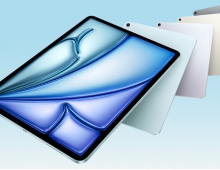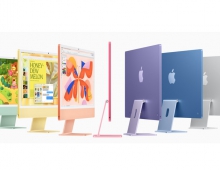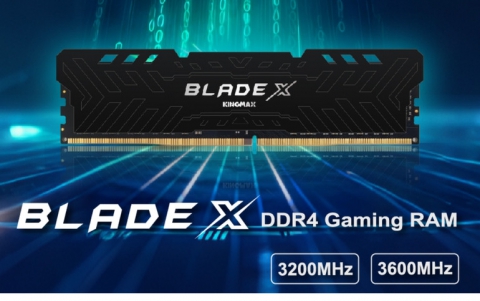
Apple Unveils iPod Nano
Steven P. Jobs, Apple's chief, took the wraps off two new products, on a San Francisco stage, Wednesday. One was a new iPod model - the iPod nano . Its two models ($199 and $249) hold 500 and 1,000 songs in memory; there's no hard drive, which helps the nano crank out 14 hours of music on a charge.
The other new product was a new combination cellphone and music player, a collaboration among Apple, Cingular and Motorola, called the Rokr E1, which will cost $250 with a new Cingular contract.
iPod Nano
 The iPod nano features a lightweight design with a color screen, Apple's patent pending Click Wheel and the ability to hold 1,000 songs or 25,000 photos. iPod nano works with the iTunes Music Store, and the iTunes digital music jukebox, including Apple's Auto-Sync technology that automatically downloads a user?s digital music collection, photos or Podcasts onto iPod nano and keeps it up-to-date whenever iPod nano is plugged into a Mac or Windows computer using USB 2.0.
The iPod nano features a lightweight design with a color screen, Apple's patent pending Click Wheel and the ability to hold 1,000 songs or 25,000 photos. iPod nano works with the iTunes Music Store, and the iTunes digital music jukebox, including Apple's Auto-Sync technology that automatically downloads a user?s digital music collection, photos or Podcasts onto iPod nano and keeps it up-to-date whenever iPod nano is plugged into a Mac or Windows computer using USB 2.0.
iPod nano features up to 14 hours battery life and skip-free playback, as well as new stopwatch, world clock and screen lock applications. The device is equipped with a 1.5-inch color LCD with a resolution of 176x132 (iPod offers 220x176).
The supported play back formats are the AAC, MP3, WAV, Audible, as well as Apple's lossless AIFF format.
The device also features optional accessories including lanyard headphones, which integrate the headphone cables into the lanyard, so users can wear their iPod nano around their neck without dangling headphone cables.
iPod nano features the same 30-pin dock connector as the iPod and iPod mini, allowing it to work with a wide range of over 1,000 accessories developed for iPod, including home stereo speakers and iPod car adapters.
By using flash memory rather than mini-hard drives in the iPod Nano music players, Apple likely increased its own component costs, said analysts.
Right now, 1GB of flash memory in the volume market costs about $45, according to both Semico and iSuppli. Thus, the 2GB iPod Nano, which sells for $199, contains around $90 worth of flash, while the $249 4GB version has about $180 worth of flash, said Semico's Jim Handy.

iPod Phones
The Rokr E1 mobile phone is also a tiny device (4.3 by 1.8 by 0.8 inches). It has a five-way nubbin, much like the one on some Palm organizers. Nudging it in any direction simulates the functions of the four iPod click-wheel buttons. What you lose, of course, is the click wheel's ability to cruise through long lists quickly.
The phone comes with a 512-megabyte TransFlash memory card, although you are only allowed to store only 100 songs on the phone, no matter how much room is left on the card. The companies aren't especially forthcoming on the reason for the 100-song limitation, but it's not hard to imagine Apple worrying about the Rokr's impact on the sales of real iPods.
Owners of the Rork are not able to download songs directly onto the phone. Music must be loaded onto the phone from a copy of iTunes 5.0, a sleek new version of Apple's free jukebox software for Mac and Windows. You can either drag songs manually onto the phone's icon, build a playlist for your phone or let the AutoFill feature surprise you with a random set of songs with each connection. In that regard, the phone works a lot like Apple's iPod Shuffle.
Songs cannot be used as ring tones, at least not the songs bought from Apple's music store. This, too, is almost certainly a limitation driven by corporate interests. Cellphone carriers charge $1.50 to $3 apiece for ring tones; Cingular certainly wouldn't want to hand that lucrative business over to Apple's music store.
In addition, the phone doesn't have a FireWire or U.S.B. 2.0 connector. It connects to a Mac or PC with a U.S.B. 1.1 cable, meaning that users should count on waiting 30 seconds for each song to transfer.
iPod Nano
 The iPod nano features a lightweight design with a color screen, Apple's patent pending Click Wheel and the ability to hold 1,000 songs or 25,000 photos. iPod nano works with the iTunes Music Store, and the iTunes digital music jukebox, including Apple's Auto-Sync technology that automatically downloads a user?s digital music collection, photos or Podcasts onto iPod nano and keeps it up-to-date whenever iPod nano is plugged into a Mac or Windows computer using USB 2.0.
The iPod nano features a lightweight design with a color screen, Apple's patent pending Click Wheel and the ability to hold 1,000 songs or 25,000 photos. iPod nano works with the iTunes Music Store, and the iTunes digital music jukebox, including Apple's Auto-Sync technology that automatically downloads a user?s digital music collection, photos or Podcasts onto iPod nano and keeps it up-to-date whenever iPod nano is plugged into a Mac or Windows computer using USB 2.0.
iPod nano features up to 14 hours battery life and skip-free playback, as well as new stopwatch, world clock and screen lock applications. The device is equipped with a 1.5-inch color LCD with a resolution of 176x132 (iPod offers 220x176).
The supported play back formats are the AAC, MP3, WAV, Audible, as well as Apple's lossless AIFF format.
The device also features optional accessories including lanyard headphones, which integrate the headphone cables into the lanyard, so users can wear their iPod nano around their neck without dangling headphone cables.
iPod nano features the same 30-pin dock connector as the iPod and iPod mini, allowing it to work with a wide range of over 1,000 accessories developed for iPod, including home stereo speakers and iPod car adapters.
By using flash memory rather than mini-hard drives in the iPod Nano music players, Apple likely increased its own component costs, said analysts.
Right now, 1GB of flash memory in the volume market costs about $45, according to both Semico and iSuppli. Thus, the 2GB iPod Nano, which sells for $199, contains around $90 worth of flash, while the $249 4GB version has about $180 worth of flash, said Semico's Jim Handy.

iPod Phones
The Rokr E1 mobile phone is also a tiny device (4.3 by 1.8 by 0.8 inches). It has a five-way nubbin, much like the one on some Palm organizers. Nudging it in any direction simulates the functions of the four iPod click-wheel buttons. What you lose, of course, is the click wheel's ability to cruise through long lists quickly.
The phone comes with a 512-megabyte TransFlash memory card, although you are only allowed to store only 100 songs on the phone, no matter how much room is left on the card. The companies aren't especially forthcoming on the reason for the 100-song limitation, but it's not hard to imagine Apple worrying about the Rokr's impact on the sales of real iPods.
Owners of the Rork are not able to download songs directly onto the phone. Music must be loaded onto the phone from a copy of iTunes 5.0, a sleek new version of Apple's free jukebox software for Mac and Windows. You can either drag songs manually onto the phone's icon, build a playlist for your phone or let the AutoFill feature surprise you with a random set of songs with each connection. In that regard, the phone works a lot like Apple's iPod Shuffle.
Songs cannot be used as ring tones, at least not the songs bought from Apple's music store. This, too, is almost certainly a limitation driven by corporate interests. Cellphone carriers charge $1.50 to $3 apiece for ring tones; Cingular certainly wouldn't want to hand that lucrative business over to Apple's music store.
In addition, the phone doesn't have a FireWire or U.S.B. 2.0 connector. It connects to a Mac or PC with a U.S.B. 1.1 cable, meaning that users should count on waiting 30 seconds for each song to transfer.





















